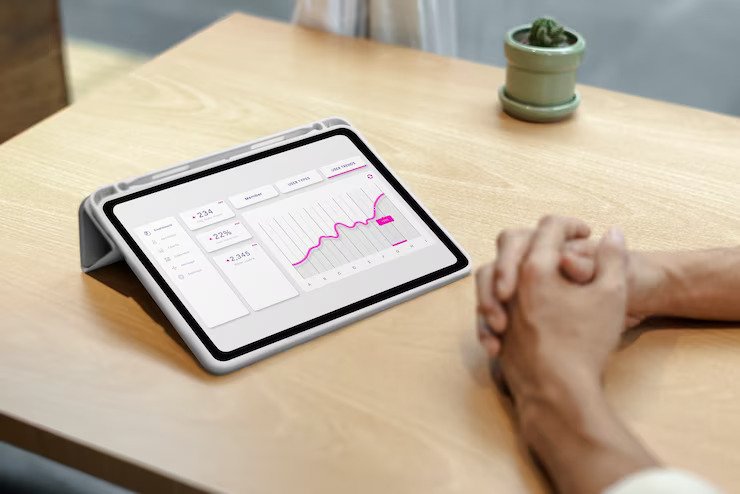Online retail requires a lot of important tools, thanks to which they will be able to conduct successful trading. Many of these tools are automated and allow a person to spend less time on calculations. One of these tools is – Product Availability Tracker.
It simplifies the work of the online store and informs you in time that a product has ended or is no longer available.
Availability Tracker Definition
An availability tracker is a useful instrument for the e-commerce sector as it aids companies in monitoring and notifying customers about their product availability. Typically implemented to handle orders for out-of-stock items or products that are yet to be delivered, this tool can greatly benefit businesses. The availability tracker notifies customers about when the product will be restocked if it is currently out of stock.
This tool is essential for online retailers that heavily rely on online sales since it reduces the frequency of communication and clarification required between buyers and sellers. In addition, it elevates customer satisfaction and streamlines inventory management processes.
How To Implement An Availability Tracker?
In today’s realities, it is not necessary to hire a specialist who would do all this, you can just use a product availability tracker tool.
Implementing an availability tracker in e-commerce can vary depending on the type of platform used. However, there are general steps that could guide you in implementing an availability tracker:
- Select an availability tracker tool: There are various availability tracker tools available, such as Inventory Planner, Orderhive, and Skubana. Choose the one that suits your business needs.
- Sync your inventory: You must sync your inventory with the availability tracker tool. This involves integrating your store with the tool to update inventory levels.
- Establish notifications: Customers can be notified automatically by email or pop-up window when a product’s inventory is running low or when the product is restocked. Ensure that these alerts are in place.
- Incorporate stock status: To indicate whether a product is in stock, out of stock, or back-ordered, include a stock status feature on your product pages.
- Track inventory trends, which will help you to trade successfully, says smallbusiness.chron.com: Monitor inventory trends by observing which products move quickly and which products require restocking. Use this data to adjust your purchasing strategy and keep your inventory in line with customer demand.
- Software can help you to optimize inventory management according to businessnewsdaily.com: Finally, optimize your inventory management by drawing insights from the availability tracker tool. Make data-driven decisions to help you stay competitive, increase sales, and maximize profitability.
Benefits Of An Availability Tracker
- Monitor your inventory levels on a daily basis and observe dips in inventory status in real-time, even on marketplaces such as Amazon, which don’t publicly display inventory levels until they’re low. Tracking daily stock levels allows you to establish proxies for sales and quantify your online market share.
- Ensure optimal inventory levels by managing inventory effectively. Avoid excess inventory and stockouts, both of which can negatively impact revenue and conversions. With access to inventory movement across multiple platforms, demand projections, and competitor stock movements, guarantee that your best-selling items are always in stock while minimizing inventory of non-performing SKUs.
- Receive alerts and notifications when inventory levels are low. With this information, take pre-emptive action to avoid stockouts and replenish inventory at your earliest convenience. You can also redistribute excessive inventory from one platform to another if stock is running low.
- With a trend forecasting model, track inventory levels and attain precise estimations of when items will be out-of-stock. This information can enable you to plan to reorder quantity and timing in advance, guaranteeing you stay stocked up and avoid missed sales opportunities.
What Details Should A Good Availability Tracker Program Include?
To effectively monitor product availability, a company requires dependable software that fully automates the task and provides up-to-the-minute information. This is particularly crucial in the eCommerce industry, where businesses handle numerous product lines, necessitating a streamlined procedure to track product availability.
An effective product availability tracking software should include:
- Consistent updates on stock status, ideally at multiple intervals every day.
- Instant notifications are accessible via both desktop and mobile versions of the software.
- A comprehensive dashboard displaying quick and detailed insights into inventory.
- Easy-to-read reports that can be exported and evaluated more deeply.
By leveraging a suitable availability tracker, a business can spare its personnel numerous work hours and redirect their attention to other critical assignments.
Conclusion
For almost all major online retailers, the availability tracker is a necessary tool. In the current competitive e-commerce landscape, it is essential to acknowledge the usefulness of an availability tracker tool. Our article provides all the necessary information to help you select the best program and reap the benefits of this technology. We hope that you can make the most of it.
Read Also:




























